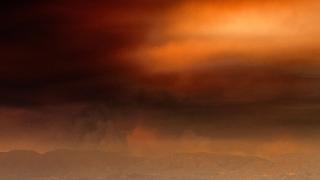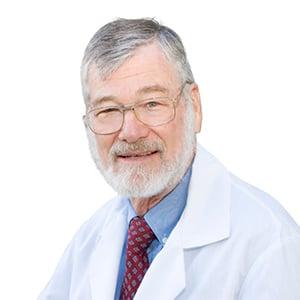As lingering smoke from the Bobcat, El Dorado and other wildfires throughout the state continues to impact our air quality, questions remain about how we can best protect our health.
With smoke persisting in much of the Southern California basin, we turned to City of Hope's Brian Tiep, M.D., director of the Pulmonary Rehabilitation and Smoking Cessation programs, for advice on coping with unhealthful air. He gave us tips for those with compromised lungs due to cancer and other conditions, as well as for healthy individuals.
Who Is at Risk?
To varying degrees, everyone. However, "The people who are at highest risk are those with respiratory conditions, including COPD [chronic obstructive pulmonary disease] that includes chronic bronchitis and emphysema, and people with asthma. Also feeling the impact are those with pulmonary fibrosis, allergies, sinusitis and heart disease," Tiep explained from his home in Monrovia, California, where he and his family were poised to evacuate if necessary.
"There's actually not much information directly available for cancer, but it is important to recognize that patients with any form of cancer, particularly lung cancer, are vulnerable to the inhalation of toxic smoke. This is mostly smoke from hillside vegetation that contains microparticles that can lodge deeply in the lungs and may remain a while. In addition, lung cancer patients often have other conditions like COPD and asthma, as well as cardiac conditions, which puts them at higher risk of complications from fire smoke."
According to Tiep, smoke inhalation causes inflammation in the airways as well as other parts of the body, rendering patients with cancer at increased risk for complications. If they are currently receiving cancer treatments, inhaling smoke places them at higher risk for complications associated with those treatments. "Some treatments may have toxicities associated with them, so there is further risk associated with high levels of smoke exposure," he said.
“Your lungs are constantly exposed to the outside air as you breathe. When inhaling dust, chemicals and particles, your lungs have built-in defenses that protect you from damage,” he said. “However, the amount of chemicals, toxins, pollutants and particulates released by these fires can easily overwhelm those defenses.” If your defenses are already stressed due to treatments like chemotherapy, you can be even more vulnerable.
Others at greatest risk of illness related to smoke inhalation according to Tiep "are people with heart disease, particularly congestive heart failure, as well as young people (children). Individuals over 65 may also have reduced ability to fight off the effects of chronic inflammation compared to younger, healthier persons.”
Steps to Take That Can Help
With so many categories of people at risk and fires likely to continue to burn for some time, our lung expert has some strong advice for staying safe.
"If you can, leave the most affected areas," Tiep advised. "If you cannot leave town, it is best to stay home with a good air conditioner, with a new filter if possible. Also, you may benefit from an air purifier with a HEPA filter — a high-energy particulate air filter. If you have an electrostatic air purifier, make sure it has another filtration stage, as some release ozone, which is a respiratory irritant.
"If you have to go out, wear a mask. Actually, double masking is good to filter out more of the particles,” he added.
Tiep, who is an avid hiker, adds that while air quality is poor everyone should "avoid outdoor exercise, which is very painful for me to say, as I live (and breathe) exercise." He also recommends staying well hydrated, and adds a breathing technique to use if you have to leave home (while wearing a mask, of course).
"If you have to go out, instead of taking really deep breaths, particularly through your mouth, there's a breathing technique called pursed-lips breathing, where you breathe in through your nose and slowly out through your mouth, with your lips pursed. That is what we teach in pulmonary rehab to improve breathing efficiency by increasing oxygen intake and carbon dioxide elimination," he said.
"There are several benefits to this type of breathing. First, it makes your breathing more efficient. As an added benefit, you make good use of your nose as a natural particle filter to protect your lungs. And because this breathing technique is more efficient, you don’t have to take as deep a breath — which again reduces your lung exposure to the toxins and particles.”
Safety Features in Place at City of Hope
City of Hope was fortunate that the wildfires in our region did not pose an imminent threat to any of its locations. All facilities have remained open to provide essential cancer treatment that should not be postponed.
However, air quality at the main Duarte facility at times has reached levels considered “unhealthy” by the Southern California Air Quality Management District. With patient care and safety our top priority, we are taking several extra steps to protect the health of patients. This includes:
- When possible, converting appointments to telehealth (telephone or video) consultations or rescheduling appointments to a later date.
- Frequently monitoring air quality outside and inside City of Hope facilities.
- Frequently monitoring building air conditioning systems and replacing air filters using HEPA and charcoal filters to mitigate harmful particles inside facilities.
- Temporarily moving COVID-19 health screenings inside.
- Installing additional air locks at City of Hope Helford Clinical Research Hospital entrances and exits and providing enclosed tunnels between buildings.
- Consolidating clinics and infusion areas to minimize time patients have to spend outside.

